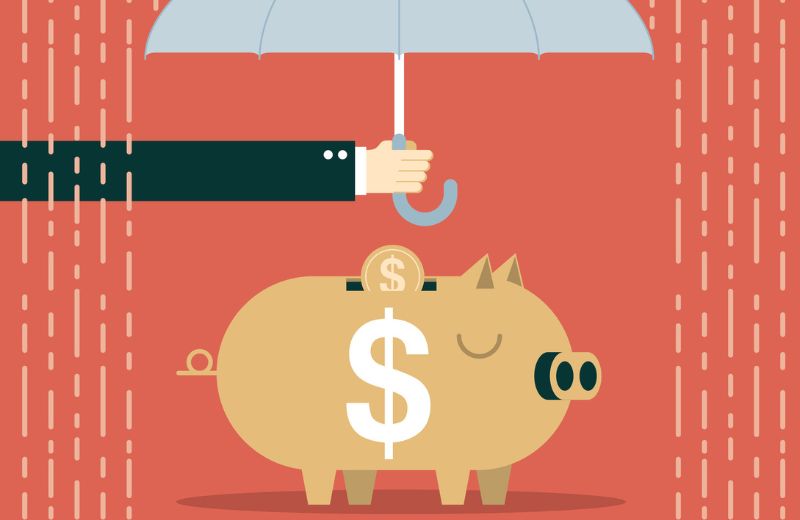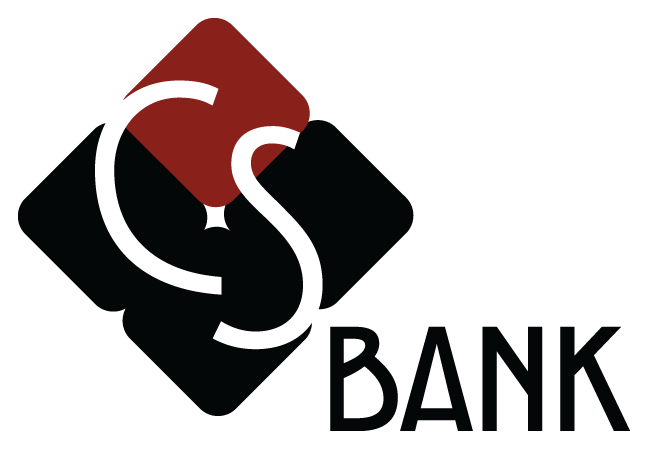not featured
2025-06-06
6/6/2025
General
published
%20(23).jpg)
How to Start an Emergency Fund
It’s happened to everyone: out of the blue, an unexpected cost arises, threatening to ruin your day (or your month!) and your budget. Whether it’s a surprise car repair bill, a burst pipe, or an unforeseen medical expense, the circumstance in and of itself can be stressful—but even more so if you don’t know how you’ll pay for it.
Creating an emergency fund can not only reduce your worries in the face of an emergency, it can also promote long-term financial stability, helping to ensure that you aren’t just one big bill away from a crisis, while avoiding high-interest debt. But according to a Money Financial Confidence Survey, 53% of Americans have no emergency savings at all.
Emergency funds can help you avoid many financial pitfalls, while offering you peace of mind. And there are ways to start, even if your budget is tight. Keep reading to learn how you can build your own emergency savings.
What is an Emergency Fund?
An emergency fund is reserve of cash that is both:
- Easily accessible should you need it.
- Not accessed unless you need it.
In other words, you build your savings in an account that you can readily access, like a savings or money market account, and not in an account like a certificate of deposit or bond that you can’t access until it’s matured. However, even though you can access your funds easily, you choose not to unless a need arises that you recognize as a true “emergency”.
Popup Expenses an Emergency Fund can Save You From
Emergency funds can help you cover:
Emergency funds are only meant to be used for true emergencies. These are unexpected needs that cannot be avoided, rather than urgent wants or items that can be planned and budgeted for.
When setting up an emergency fund be sure to set parameters for its use to avoid depleting it and not having money available when an actual emergency arises.
Unexpected Home Repairs
- Yes: Major plumbing issues, roof leaks, wiring problems, HVAC problems, and other unexpected issues that can cause major damage to your home and make your house unsafe to live in.
- Yes: Essential urgent home repairs that will be reimbursed by your homeowners’ insurance.
- No: Expected home maintenance need. For example, if you know you will need a new roof in a few years.
- No: Planned renovations.
- To better prepare yourself for possible homeowner expenses, checkout our blog, 8 Expenses for New Homeowners to Prepare For.
Emergency Auto Costs
- Yes: Major repairs required to pass an inspection or to make your vehicle safe to drive.
- Yes: Replace primary vehicle if yours is no longer operational.
- No: Purchasing a new vehicle because you are ready for an upgrade or want a second car.
- No: Routine maintenance.
- Yes: Large, unexpected expenses not covered by insurance.
- No: Elective procedures or routine care costs.
Loss of Income
- Yes: Daily basic living expenses while you are looking for a new job or caring for a loved one during an emergency.
- No: Lost wages due to vacation or retirement.
Pet Care
- Yes: Emergency vet bills.
- No: Routine care costs like vaccinations.
- Yes: Essential travel to visit a loved one during a time of need.
- No: Vacations or planned trips.
Essentially, if you can plan for an expense or don’t need it to have or do something in order to stay safe or healthy, it’s not an emergency expense and you shouldn’t use these funds for it.
When you have a necessary expense you can plan for, like a new roof or new car, create a budget goal and save for it separately. For instance, if you are looking to replace your vehicle in 2 years, determine how much you will need to save total (minus the estimated value of your old vehicle), and create a specific savings plan just for that purchase.
Why Do You Need an Emergency Fund?
Emergency funds can help you…
Avoid high-interest and unnecessary debt.
You may wonder why it’s important to save for an emergency when there are other options available. Maybe you find that you can pay for most unexpected costs from your regular income. Or perhaps in the past you’ve utilized credit cards, loans, or lines of credit to cover these costs when they don’t fit into your immediate budget. However, having an emergency fund is an essential money management practice that can have great financial benefits. Here’s why.
Emergency funds can help you…
Create an accurate budget and stick to it.
It’s hard to stick to a budget—including your monthly savings for retirement and other goals—if your costs are always changing. Having a regular amount that you set aside for emergencies means that you can better understand how much money you have to work with for other expenses and set an appropriate budget accordingly. This may mean adjusting spending habits in the short-term, but the long-term payoff could be huge.
Avoid high-interest and unnecessary debt.
Even if you can pay for an unexpected cost using credit or a loan, that simply means you are shifting the paying of the expense to future income, with added interest costs. And if you are using a high-interest credit card, those interest costs could rise to become greater than your initial borrowed amount, especially if you don’t work to pay it off as quickly as possible.
While using credit can help you build a good credit history, too much debt can negatively impact your credit score and prevent you from getting a loan when you need it to achieve a financial milestone, like purchasing a home. Additionally, spiraling debt and rising debt bills can put you in great financial jeopardy. Individuals facing bankruptcy or home foreclosure are often surprised just how quickly their debts got out of control. When possible, credit is best used to fund things that can add value to your life, like a college education or home purchase. Using an interest-bearing savings account to save to pay for other expenses has the opposite, positive effect of reducing their impact on your budget.
Better reach your financial goals with specific savings plans.
When you create separate plans to save for individual goals—rather than simply setting aside some money each month—you ensure that you aren’t neglecting any important savings objectives. For example, if you’re saving to buy a new home, but have an emergency auto repair bill, you can use your emergency fund to cover that bill, rather than set back your homeownership plans.
Reduce stress during an actual emergency and achieve financial peace of mind.
Reduce stress during an actual emergency and achieve financial peace of mind.
Knowing that you have a way to pay for an unexpected expense can help alleviate stress, especially in the midst of a stressful situation. Having a financial cushion can also help you feel more in control of your finances and help prevent you from falling into the trap of living paycheck to paycheck. Emergency funds can be key to achieving ongoing financial security.
How Much Emergency Fund Do You Need?
Your emergency fund needs will depend on a lot of factors. Are you single or do you have a family to support? What are your living expenses each month? Do you own a home that may have additional repair costs? How well do you live within your current monthly budget? The more monthly expenses you have or the tighter your current budget, the more you’ll want to save for an emergency. A good rule of thumb is to set aside 3 to 6 months of living costs.
To get an idea how much this will be for you, take inventory of your monthly expenses – this is the essentials, not wants. These are debts or monthly expenses you must pay each month, and should include:
- Mortgage/rent
- Food
- Childcare
- Pet costs (food and care)
- Utilities
- Transportation costs (car payments, maintenance, and fuel)
- Health insurance/medical costs
- Other monthly debt payments
Examine your credit card or bank account statements to get the most accurate view of your spending habits and miscellaneous living expenses. Once you have a decent idea of your general monthly expenses, add them up and multiply the total by the number of months you hope to save for. If six months feels like an insurmountable amount, start with three.
How to Start an Emergency Fund
Steps for Building Your Fund
More Tips to Start an Emergency Funds
Where to Keep Your Emergency Fund
Start Building Your Emergency Fund Today
Knowing a ballpark figure to save for (3 to 6 months of income) is the first step in starting an emergency fund. But calculating how much you need to save is arguably the easiest part. Creating a realistic plan to save that money—and sticking to it—can be a bigger challenge.
Steps for Building Your Fund
You can create a successful emergency savings plan by following these important steps:
- Set your emergency savings goal. Calculate the total amount you hope to save, based on your monthly expenses.
- Create a plan for making contributions. Determine how much you’ll need to set aside each month (and for how long!). For instance, if you hope to save $15,000 over a span of three years, you could aim to set aside $5,000 each year, or about $400 each month.
- Adjust your spending budget, as needed. Consider ways to reduce spending so that your emergency savings fits into your budget.
- Make an initial contribution. Some accounts (especially the ones with the best interest rates!) may require an initial deposit. But even if you can only contribute $100 to start, remember, every little bit counts.
- Automate your savings. Whether you have your employer send a percentage of your paycheck into a separate savings account, or you set up a regular transfer from your checking account, automating savings means you never miss a deposit and your plan stays on track.
- Reevaluate your situation on a regular basis. If your financial circumstances change, you may need to make adjustments. A raise may allow you to save more, or an added expense may eat into your budget. Evaluate your savings plan as part of your as part of a yearly financial checkup. When you have to dip into your account to pay for a legitimate emergency expense, take steps to rebuild it as quickly as possible. And when you reach your goal, use that monthly allotment to increase savings elsewhere.
Firstly, don’t hesitate. The sooner you start saving, the better. The more months you have to save and the longer the interest on your savings can compound, the easier it is to build a larger financial cushion. Even if you can only start by saving a little bit at a time, it’s better to save a small amount than not at all. If you have children, encourage your kids to start saving today.
Don’t be afraid of making tough choices. If your current budget is tight, find ways to open it up and redirect that money to savings. For instance, cancelling just a handful of seldom-used streaming services, cutting back takeout to once a week, or switching cell-phone providers could free up enough money to jumpstart your plan.
Save your windfalls. Tax refunds, gift money, bonuses, and raises all create opportunities to boost your savings. Any money that’s not currently accounted for can be used to help you quickly establish your fund. Later, these windfalls can be redirect for other savings goals, like going on a special family vacation.
Check out our post, How to Make a Budget for more tips on how to create an income and spending plan that maximizes savings.
As we mentioned above, you want your funds to be accessible, but separate from the accounts you use for day-to-day spending and other savings goals. To build your nest egg faster, you also want to utilize interest—the more the better.
For these reasons, ideal vehicles for emergency savings include:
- Traditional Savings Accounts. Lower balance requirements like those of our Statement Savings Account make these a great option when you are just starting to save. Also available for minors.
- High-Interest Savings Accounts. Like our Kasasa Saver Account, many high-yield savings accounts offer tiered interest depending on the size of your balance, allowing you to grow your savings even faster the more you save
- Money Market Accounts. Pairing high interest with check-writing capabilities, our money market accounts offer the convenience of a checking account with the tiered interest of a high-yield savings account. Most money market accounts have higher minimum balance requirements than savings accounts in order to avoid monthly fees, so be sure to understand these before opening an account.
- Health Savings Accounts. A health savings account can not only help you build up a cash reserve for medical expenses, it can also provide same-year tax benefits.
With six savings account options to meet a variety of budgets, easy automatic transfer setup with Digital Banking to facilitate savings, and dedicated, local customer service representatives to answer your questions and help you find a savings plan that works for you, saving is easy at CS Bank.
Contact us or visit a branch location in Eureka Springs, Berryville, Harrison, Huntsville, or Holiday Island in Northwest Arkansas or Cassville in Southwest Missouri to start your savings journey!


